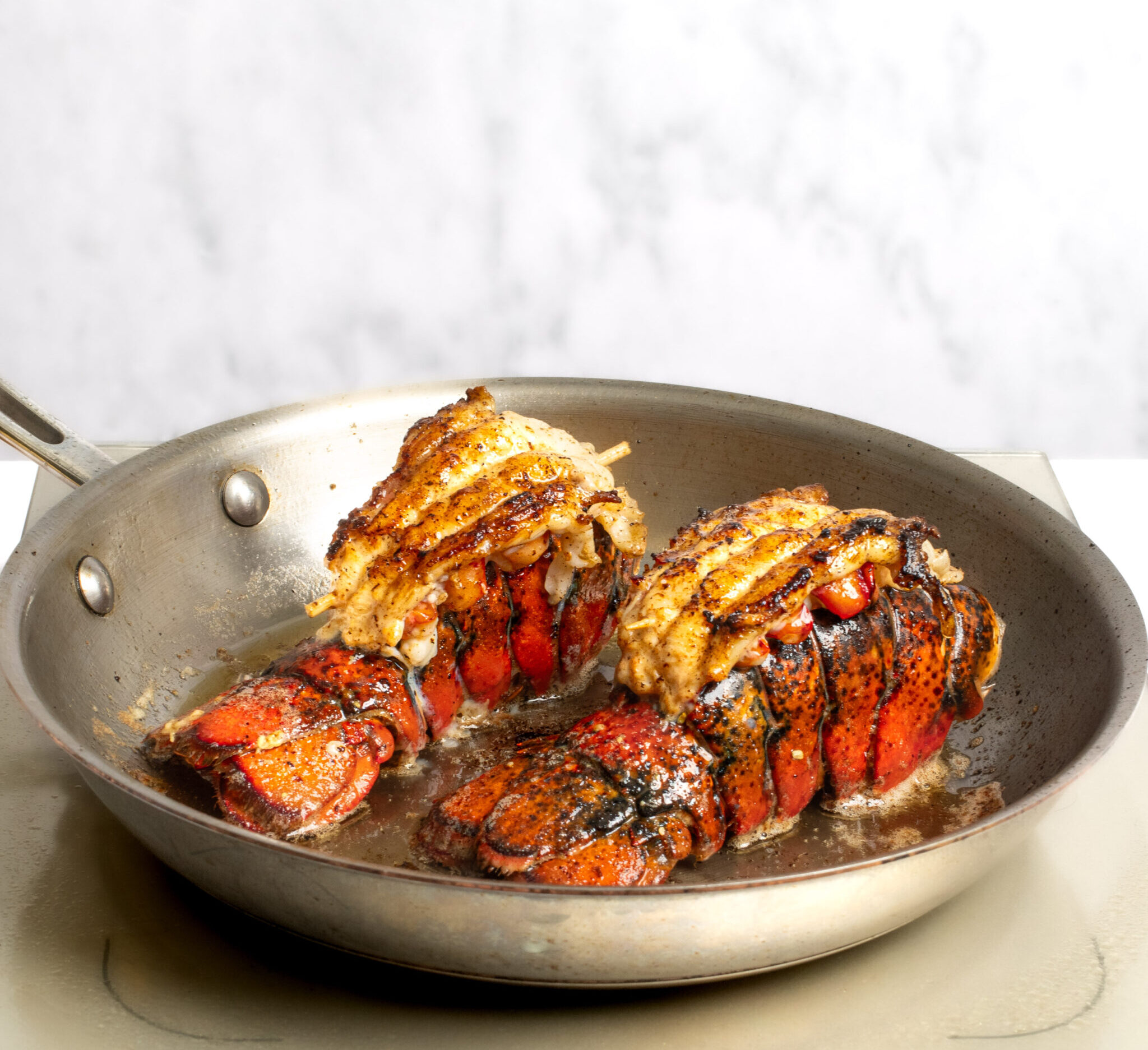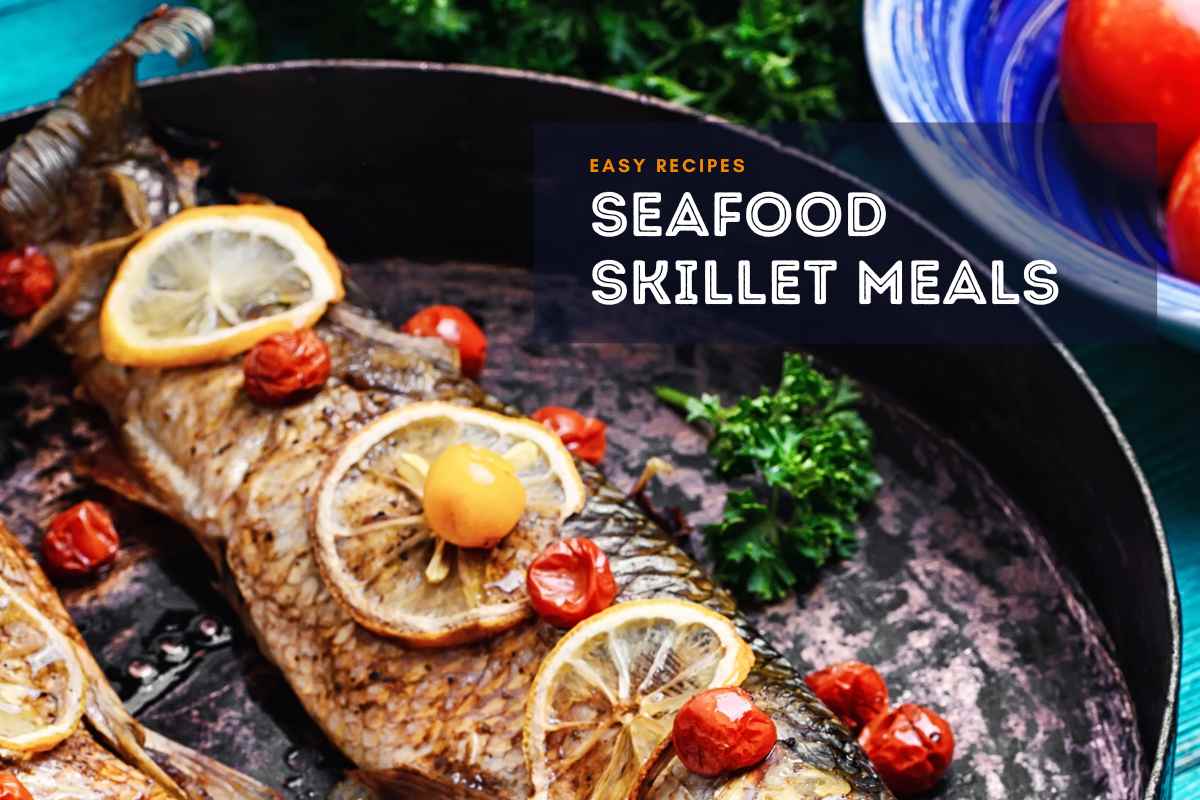
Seafood Choices to Enhance Muscle
Enhancing muscle growth and optimizing exercise performance are pivotal goals for many fitness enthusiasts and athletes. Seafood emerges as a powerful ally in this quest, owing to its impressive nutritional profile. Rich in high-quality protein, seafood is essential for muscle repair and growth, and the range of nutrients found in various fish and shellfish also contribute to overall health and workout recovery. Additionally, the omega-3 fatty acids prevalent in many types of seafood are known for their anti-inflammatory properties and their role in maintaining heart health, which are beneficial for enduring strenuous physical activities.
Integrating seafood into one's diet can be a strategic move for those looking to improve their fitness outcomes. Its diverse varieties mean that there are numerous options to cater to personal tastes while still reaping the nutritional benefits. Seafood can effectively replace other protein sources with a potentially higher fat content, offering a leaner alternative that doesn’t sacrifice the body’s protein requirements. Moreover, knowing how to select and incorporate seafood can help personalize a diet to align with individual training routines and goals.
Key Takeaways
- Seafood provides high-quality protein and omega-3 fatty acids that benefit muscle growth and exercise performance.
- A diverse selection of seafood offers a range of essential nutrients that support health and recovery post-exercise.
- Seafood can serve as a lean protein source in a diet tailored to enhance personal fitness and training outcomes.
Best Seafood Choices for Muscle Building
Selecting a suitable seafood is crucial for muscle building due to its high-quality protein, essential fatty acids, and an array of vital nutrients. Each type of seafood offers distinct benefits to support muscle growth and overall health.
1. Salmon: A Top Choice for Omega-3s and Protein
Salmon is known for its high content in omega-3 fatty acids, which can reduce muscle inflammation and aid in recovery. Additionally, it is a rich source of high-quality protein and vitamin D, making it a superior choice for muscle building—protein: 5.8 grams.
2. Tuna: Lean Protein
Tuna is a lean protein source low in fat and calories but high in muscle-building nutrients.
3. Sardines and Herring: Small Fish With Big Benefits
These small fish pack a powerful punch with high levels of omega-3 fatty acids, calcium, and vitamin B12. Due to their rich nutrient profile, Pacific sardines are an excellent choice for muscle maintenance and strengthening.
4. Shrimp: High Protein, Low in Fat
Shrimp are a fantastic seafood option for bodybuilders due to their high protein content and low fat. They are also a source of antioxidants and minerals like phosphorus, critical for muscle function and repair.
5. Lobster: High Protein, Low in Fat
Lobster is another luxurious yet muscle-friendly seafood that offers a substantial amount of high-quality protein with very little fat, aiding in lean muscle development while also providing essential nutrients.
6. Cod: Lean White Fish
Cod is a lean white fish with plenty of protein and minimal fat. It is a versatile, mild-flavored protein source for those who want to build muscle without added calories.
7. Halibut: Rich in Protein and Omega 3s
Halibut is a great source of high quality protein and rich in omega-3 fatty acids. Its nutrient density supports muscle growth and overall health, making it a smart choice for a fitness-focused diet.
Benefits of Seafood for Muscle Growth
Seafood offers a rich array of nutrients vital for developing and maintaining muscle mass. High in protein and necessary fatty acids, it is an excellent dietary choice for anyone looking to enhance muscle growth while managing overall calorie intake.
High Protein Content
Seafood is an exceptional source of lean protein, which is crucial for muscle protein synthesis. The essential amino acids in seafood are muscle-building blocks, aiding growth and recovery after exercise. For example, consuming seafood like tuna or salmon can support the body's need for protein to facilitate muscle development and repair.
The Role of Protein in Muscle Growth
Protein is necessary to muscle growth and recovery, it provides the essential amino acids that serve as the building blocks for muscle synthesis.
Understanding Protein Synthesis
Protein synthesis is the biological process when cells generate new proteins. This is vital for muscle repair and growth following exercise. During resistance training, muscle fibers are damaged, triggering the body to respond by synthesizing new proteins to repair and strengthen the muscle tissue. Adequate dietary protein is essential because it supplies the amino acids necessary for creating new muscle proteins.
Incorporating a variety of these protein-rich seafood options into one's diet can optimize muscle-building and offer a range of additional nutrients that support overall health and exercise performance.
Health Benefits of Omega-3 Fatty Acids
Omega-3 fatty acids, particularly EPA and DHA found in fish, play a crucial role in bodily functions, which aid muscle growth and enhance exercise performance. They are primarily known for reducing inflammation and improving joint health, making them vital for athletes and individuals with active lifestyles.
Reducing Inflammation
Omega-3 fatty acids are recognized for their anti-inflammatory properties. Regularly consuming fish rich in omega-3s, like salmon and mackerel, can help reduce the inflammatory response associated with intense exercise. In particular, EPA effectively decreases the production of molecules and substances linked to inflammation.
Improving Joint Health
In terms of joint health, omega-3 fatty acids contribute to maintaining joint mobility. Supplements containing omega-3s or consuming omega-3-rich seafood can relieve joint pain and stiffness often experienced by regular physical activity. The lubricating effect of omega-3s on joints can enhance overall exercise performance by supporting smooth and efficient movement.
Essential Vitamins and Minerals in Seafood
Seafood is a nutritional powerhouse, rich in vitamins and minerals that are vital for muscle growth and performance. These nutrients help in energy metabolism and play an important part in bone health and muscle function.
Boosting Energy and Performance
Seafood provides an abundance of B vitamins, particularly vitamin B12, which is very important for energy production and efficient metabolic performance. For example, a single serving of salmon can give over 100% of the daily value of vitamin B12. Iron is another mineral found in seafood like oysters, which is essential for oxygen transport in the blood, enhancing overall energy levels and athletic performance.
- B-vitamins: Essential for energy production
- Iron: Increases oxygen delivery to muscles
Supporting Bone Health
Calcium and Vitamin D are two nutrients found in seafood that are critical for bone health. Calcium is fundamental to bone structure, while Vitamin D aids in calcium absorption. Many types of fish, such as salmon, provide both of these nutrients, contributing to stronger bones and helping prevent injuries during physical activity.
- Calcium: Maintains bone structure
- Vitamin D: Enhances calcium absorption
Seafood Varieties and Their Nutritional Profiles
A comprehensive understanding of nutritional profiles is vital when evaluating seafood for muscle growth and exercise performance. Different seafood varieties offer specific nutrients that can significantly benefit fitness enthusiasts.
Lean vs. Fatty Fish
Lean fish, such as cod and flounder, generally have white or lighter-colored flesh and provide high-quality protein with minimal fat content. This protein assists in muscle repair and building, which is essential for anyone engaging in regular exercise.
In contrast, fish like salmon, tuna, and sardines are high in omega-3 fatty acids and known for their anti-inflammatory properties and support for cardiovascular health. Particularly, salmon is lauded for its high omega-3 content, which can exceed the daily recommended intake in just a 3-ounce serving. Salmon is a great provider of vitamin B12 and selenium. Tuna and sardines follow, with these varieties also contributing substantial amounts of omega-3s and other nutrients beneficial for maintaining a healthy muscular system.
Shellfish Selections
Shellfish, including shrimp and clams, are also excellent protein sources while low in fat. Shrimp, for instance, is a versatile seafood that not only packs a protein punch but is also low in calories. Clams offer a unique blend of vitamins and minerals, providing vitamin B12, iron, and potassium, aiding oxygen transport and muscle function during intense workouts.
Impact of Seafood on Exercise Recovery
Seafood is a potent ally in the quest for improved exercise recovery. The nutritional profile of many fish, particularly their omega-3 fatty acid content, directly supports muscle recovery and helps reduce soreness.
Reducing Muscle Soreness
Omega-3 fatty acids found abundantly in fish such as salmon and tuna are key in diminishing exercise-induced muscle soreness. Clinical studies indicate that consuming seafood with high levels of EPA and DHA omega-3s can significantly reduce muscle soreness following exercise, fostering a quicker transition to subsequent training sessions. For instance, increased intake of EPA and DHA from fish has been correlated with lessened post-exercise muscle soreness, which is crucial for athletes and recreational exercisers alike (Seafood Wins! Why Athletes Turn to Fish for Fuel).
Speeding Up Recovery Time
The consumption of seafood helps reduce muscle soreness and contributes to a faster recovery time. The protein found in seafood like cod is a building block for muscle repair and recovery, restoring muscle function more rapidly after strenuous exercise. By incorporating seafood such as Wild Cod into a post-training diet, individuals can experience more efficient recovery periods, allowing muscles to recuperate and strengthen in readiness for future workouts (Optimizing Muscle Recovery with Seafood).
Incorporating Seafood into Your Diet
Incorporating seafood into one's diet provides high-quality protein and essential nutrients to enhance muscle growth and improve exercise performance. Here's how to craft balanced meals and explore flavorful seafood recipes for optimal health and fitness gains.
Creating Balanced Meals
Integrating seafood into a diet should focus on balance and variety to ensure adequate intake of essential macro and micronutrients. When crafting balanced meals, individuals should consider the following guidelines:
- Pair seafood with whole grains like quinoa or brown rice, which offer complex carbohydrates for sustained energy.
- Add various colorful vegetables to ensure a wide range of vitamins and minerals important for recovery and health.
- Use healthy cooking methods such as baking, steaming and grilling, to keep the nutritional benefits of seafood without adding excess fat.
For example, a nutritious meal could consist of grilled salmon, a side of mixed greens drizzled with vinaigrette, and a serving of brown rice or quinoa. This combination supports muscle-building efforts with high-quality protein from salmon and provides essential omega-3 fatty acids, known for their anti-inflammatory effects that aid in post-exercise recovery.
Seafood Preparation and Recipes
Seafood's versatility allows for a wide selection of preparation methods and recipes that cater to diverse taste preferences and dietary needs. Here are key points to consider:
- Quick and Easy Recipes: Opt for shrimp stir-fry or tuna salad, which can be prepared in minutes and are flavorful and rich in protein.
- Cooking Techniques: Use methods like poaching or steaming to showcase seafood's natural flavors and retain maximum nutritional content.
Incorporating seafood into one's diet can start with something as simple as a tuna salad, comprising canned tuna mixed with low-fat mayonnaise and diced celery and served on whole-grain bread. Alternatively, a shrimp stir-fry could combine lean protein with a bounty of vegetables over brown rice, complete with a light soy sauce and ginger marinade for taste.
By including seafood in regular meal planning, individuals enjoy a tasty variety of options and supply their bodies with the necessary components to support an active lifestyle and muscle maintenance.
Comparing Seafood with Other Protein Sources
Seafood stands out when evaluating protein sources for muscle growth and exercise performance. The high-quality protein, omega-3 fatty acids, and micronutrients in seafood make it a valuable player in an athlete's diet.
Seafood vs Chicken
Seafoods such as tuna and salmon are rich in omega-3 fatty acids, contributing to protein intake and anti-inflammatory benefits vital for recovery. Chicken breast, a low-fat protein source useful for muscle repair, does not offer these additional omega-3s. Nutritional content per 100 grams can be summarized as follows:
- Seafood (tuna): 29g protein, contains omega-3 fatty acids
- Chicken breast: 31g protein, minimal omega-3 fatty acids
Personalizing Seafood Choices for Your Training
Personalizing seafood choices is critical for optimizing muscle growth and enhancing exercise performance. Different athletes, from recreational runners to professional NFL players, have varying nutritional requirements that can be effectively met with suitable seafood options.
Consulting a Nutritionist
A nutritionist can provide personalized dietary plans tailored to an athlete's training regimen and goals. Adults engaged in regular training should consider dietary consultations to ensure their seafood choices align with their nutritional needs, energy expenditure, and recovery demands.
Tailoring to Athletic Needs
Athletes in the United States, particularly those training at high levels, such as in the NFL, require precise nutrition for peak performance. Tailoring seafood can involve selecting species with higher omega-3 fatty acids for inflammation reduction and muscle recovery. For instance, wild-caught salmon—noted for its protein content—is often recommended. Here are some examples:
- High Protein for Muscle Repair: Options like salmon, which has 40g of protein per 200g filet, support tissue repair and growth.
- Omega-3 Fatty Acids for Recovery: Fatty fish such as mackerel and sardines are packed with omega-3s, which are beneficial for managing exercise-induced inflammation.
By focusing on their specific athletic needs, individuals can maximize the benefits their bodies draw from seafood, directly supporting their exercise and training objectives.
Frequently Asked Questions
In this section, readers can find tailored information regarding integrating seafood into their fitness regimes, focusing on muscle building and performance enhancement.
What types of fish are considered most effective for muscle building?
Fish rich in lean protein, such as tuna and salmon, are widely recognized for their muscle-building properties. The high-quality proteins in these fish facilitate the growth and repair of muscle tissues.
How does the protein content in seafood compare to that in chicken for muscle growth?
Seafood, especially types like tilapia and cod, can be on par with chicken regarding protein content, which is essential for muscle synthesis. However, seafood may offer additional nutrients like omega-3 fatty acids that benefit overall health and muscle function.
What are the benefits of including seafood in an exercise performance-enhancing diet?
Seafood is high in protein and contains omega-3 fatty acids and other nutrients that help reduce inflammation and improve heart health, contributing to better exercise performance and endurance.
Can seafood support muscle recovery post-workout, and if so, which types are best?
Yes, seafood such as mussels are excellent for post-workout muscle recovery. They provide high-quality protein to repair muscles and a suite of minerals that aid in reducing muscle soreness and promoting recovery.
Aside from salmon, what other seafood options are high in protein for enhancing muscle growth?
Other high-protein seafood options include halibut, octopus, and shrimp. These are all excellent choices for those aiming to increase their protein consumption to support muscle growth.



















